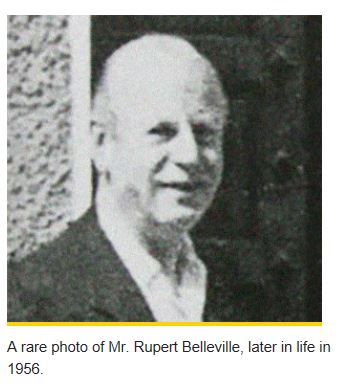OFSO wrote:Thanks for that post, Caco. Very little written info in Spain on that period: 'they' do not want to discuss it.
I am fascinated by this period in Spanish history OFSO and am glad somebody here finds these posts to be of interest. The fact that the war drew combatants from many nations into opposing camps, often finding themselves pitted against their fellow countrymen, in Spain has always been a conundrum for me and must have created many moral dilemmas for those involved, not least because of the internecine savagery, against ordinary civilians in many cases, by both opposing sides and the extrajudicial nature of the participation of pilots (and soldiers etc.) in the conflict.
I certainly do favour the Republican cause but am conflicted because many of the people who flew or fought for the Nationalist side did so because they were morally convicted to do so and who were also clearly decent people as well. Of course many foreign scoundrels were also drawn to take up arms on or other side, driven by the lure of Mammon and sundry other nefarious motivations.
In order to balance the books, as it were, I would like to draw ops-normalisers attention to an English pilot who flew for the Nationalists. His name was Rupert Bellville and he crops up in Tom Moulson's book "The Millionaires' Squadron" which I read to trace some of the history of South African Roger Bushell, he being of the Great Escape fame, having being among those escapees who were so cruelly murdered by the Nazis.
Roger BushellThe Millionaires' Squadron601 SquadronBellville was a bit of a toff having been born, to a very wealthy family, in Market Harborough, Leicestershire in 1904. A product of schools such as Eton he was packed off in his early twenties by his family to live with friends in Spain where he became very friendly with a wealthy circle of Spanish dons in the sherry business. He also developed a love of bull fighting!
A member of White's Club of St James he was recruited by Lord Edward Grosvenor for his No 601 (County of London) Squadron Auxiliary Air Force. Bellville gained his commission in 1926 and learned to fly at Northolt.
It appears he was a very good pilot and was a notable personality, if somewhat of a rake and a drunkard as well as believing that normal rules didn't apply to him ( vide. the article noted below, his bloody mindedness draws me to the favour the man in this instance although I abhor cigarette smoking just as much as I do bull fighting).
The Cigarette ClubAfter he had resigned his commission he went on to fly as the personal pilot to the Honourable Mrs Edwin Montague, flying her all over Europe Syria, Iraq, Palestine, Iraq, India, Siam and China.
He was drawn to join the Nationalist side in Spain while attending the funeral of Calvo Sotelo, the monarchist politician, whose murder had been one of the precipitators of the commencement of the Spanish Civil War.
Thereafter he was drawn into the war, becoming embroiled in many scrapes, while also finding time to idle his life and fritter money away in drinking, womanising in places like Biarritz, in between escapades in Spain, that would have done justice to a Biggles novel!
Rupert Bellville was one of the few who fought in Spain for Franco. The heir to Papillon Hall, a Leicestershire country house redesigned by Edward Lutyens but already crumbling, the argumentative pilot joined the Spanish Falange militia in the early days of the war thanks to contacts in the Andalusian sherry industry. He was best known for arriving in Santander by aeroplane to congratulate the victorious Nationalist troops only to find it was still in the hands of the Republicans. He narrowly escaped a firing squad. Oxford graduate Peter Kemp contributed more to Franco's cause, first in the Carlist Requetes and later in the Foreign Legion. Those two and others can be found in my 'Franco's International Brigades: Adventurers, Fascists, and Christian Crusaders in the Spanish Civil War' (2013).
http://www.brightreview.co.uk/ARTICLE-Black-Sheep.htmlFighting For Franco: International Volunteers in Nationalist Spain During ...Count Theodore ZichyHe flew with Count Zichy during the Spanish Civil War and thereafter joined the Air Transport Auxiliary during the Second World War at one stage delivering the appalling Fairey Batttle aircraft to Chateau D'Un in France in November 1940 as the Germans moved in. He and his fellow transport pilots only managing to escape to escape in Hurricanes that had been listed as unserviceable.
Like many of his generation Bellville found post war British austerity not to be to his taste and he left Britain to live a sybaritic lifestyle in Paris, Spain and then New York, where he was a great friend of Ernest Hemmingway, who he had first met during the Spanish Civil War in 1937. He last years of life (he died in 1962) were lived as a roué, chasing wine women and song and gambling!


- Rupert Bellville.JPG (28.81 KiB) Viewed 331 times
He was the father of Hercules Bellville the well known film producer...
Hercules BellvilleMore of a greater contrast to Frank Glasgow Tinker is hard to find.
Caco
